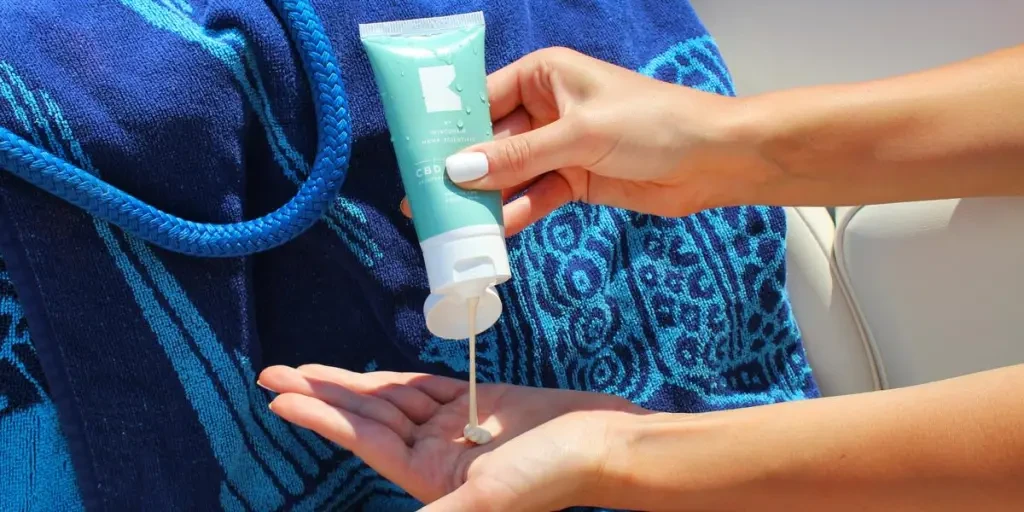In the ever-evolving world of skincare, finding the perfect sunscreen for acne-prone skin can be a daunting task. With the rise in awareness about skin health and the harmful effects of UV rays, the demand for specialized sunscreens has surged. This guide delves into the unique attributes of sunscreens tailored for acne-prone skin, exploring why they are trending and their market potential in 2025.
Table of Contents:
– Understanding Sunscreens for Acne-Prone Skin: Why They Are Trending and Market Potential
– Exploring Popular Sunscreen Types for Acne-Prone Skin
– Addressing Common Pain Points and Solutions
– Innovations and New Products in the Market
– Final Thoughts on Selecting the Right Sunscreen for Acne-Prone Skin
Understanding Sunscreens for Acne-Prone Skin: Why They Are Trending and Market Potential

What Makes Sunscreens for Acne-Prone Skin Unique?
Sunscreens designed for acne-prone skin are formulated to provide sun protection without exacerbating acne. These products typically feature non-comedogenic ingredients, meaning they do not clog pores, which is crucial for individuals with acne-prone skin. Additionally, they often include soothing and anti-inflammatory components like niacinamide and aloe vera to calm irritated skin. The lightweight, oil-free formulations ensure that the skin remains breathable and less prone to breakouts. This unique combination of sun protection and acne care has made these sunscreens a staple in the skincare routines of many.
Social Media Buzz: Trending Hashtags and Broader Trends
The influence of social media on skincare trends cannot be overstated. Hashtags such as #AcneFriendlySunscreen, #ClearSkinGoals, and #SPFforAcne have gained significant traction, reflecting a growing community of individuals seeking effective sun protection that caters to their specific skin needs. Influencers and dermatologists frequently share their recommendations and reviews, further driving the popularity of these products. The broader trend towards personalized skincare solutions has also contributed to the rise of sunscreens for acne-prone skin, as consumers increasingly seek products that address their unique concerns.
Market Demand: Areas of Growth and Consumer Interest
The global sunscreen market is projected to grow at a compound annual growth rate (CAGR) of 5.28%, reaching $16.204 billion by 2029, according to a report by Research and Markets. This growth is fueled by the increasing prevalence of skin conditions such as acne and skin cancer, which heightens the need for effective sun protection. The rising awareness about the harmful effects of UV radiation and the importance of daily sunscreen use has also played a significant role in this market expansion.
In particular, the demand for sunscreens that cater to specific skin types, including acne-prone skin, is on the rise. Consumers are becoming more discerning about the ingredients in their skincare products, favoring formulations that are free from harsh chemicals and potential irritants. This shift towards clean beauty and natural ingredients is evident in the growing popularity of mineral-based sunscreens, which use zinc oxide and titanium dioxide to provide broad-spectrum protection without clogging pores.
Moreover, the increasing prevalence of skin cancer and other UV-induced skin conditions has underscored the importance of regular sunscreen use. According to the American Academy of Dermatology, approximately 9,500 people in the United States are diagnosed with skin cancer every day. This alarming statistic has driven consumers to seek out sunscreens that offer robust protection while also catering to their specific skin concerns.
In conclusion, the market for sunscreens tailored for acne-prone skin is poised for significant growth in 2025. The unique formulations, social media influence, and rising consumer awareness about skin health are key drivers of this trend. As the demand for personalized skincare solutions continues to rise, sunscreens for acne-prone skin will undoubtedly remain a crucial component of the skincare market.
Exploring Popular Sunscreen Types for Acne-Prone Skin

Mineral vs. Chemical Sunscreens: Pros and Cons
When selecting sunscreens for acne-prone skin, understanding the differences between mineral and chemical sunscreens is crucial. Mineral sunscreens, also known as physical sunscreens, contain active ingredients like zinc oxide and titanium dioxide. These ingredients sit on the skin’s surface and reflect UV rays away from the skin. According to a professional report, mineral sunscreens are often recommended for sensitive and acne-prone skin because they are less likely to cause irritation or clog pores. Brands like Neutrogena have developed mineral sunscreens that are lightweight and non-comedogenic, making them suitable for daily use.
On the other hand, chemical sunscreens contain organic compounds such as oxybenzone, avobenzone, and octinoxate, which absorb UV radiation and convert it into heat, which is then released from the skin. While chemical sunscreens tend to be more lightweight and easier to apply without leaving a white cast, they can sometimes cause irritation or allergic reactions, particularly in individuals with sensitive or acne-prone skin. For instance, Neutrogena’s Purescreen+ Invisible Daily Defense Mineral Face Liquid SPF 30 is designed to provide broad-spectrum protection without the chalky residue often associated with mineral sunscreens.
Key Ingredients to Look For: Effectiveness and Safety
When sourcing sunscreens for acne-prone skin, it is essential to focus on key ingredients that ensure both effectiveness and safety. Ingredients like zinc oxide and titanium dioxide are highly recommended for their non-comedogenic properties and broad-spectrum UV protection. Additionally, incorporating anti-inflammatory and soothing ingredients such as niacinamide, bisabolol, and green tea extract can help reduce redness and irritation, which are common concerns for acne-prone skin. For example, SkinCeuticals’ Clear Daily Soothing UV Defense SPF 50 includes bisabolol and glycerin to provide hydration and reduce inflammation.
Another critical factor is the inclusion of antioxidants like vitamins C and E, which can help protect the skin from free radical damage caused by UV exposure. Products like Murad’s Multi-Vitamin Clear Coat Broad Spectrum SPF 50 are formulated with a blend of vitamins to enhance skin resilience and provide additional protection against environmental aggressors. Ensuring that sunscreens are free from common irritants such as fragrances, parabens, and oxybenzone is also vital to prevent potential breakouts and skin reactions.
Consumer Feedback: What Users Are Saying
Consumer feedback plays a significant role in understanding the effectiveness and user experience of sunscreens for acne-prone skin. Many users appreciate mineral sunscreens for their gentle formulation and reduced risk of irritation. For instance, Aveeno’s Protect + Soothe Mineral Sunscreen Stick SPF 50 has received positive reviews for its ease of application and suitability for sensitive skin. Users have highlighted its non-greasy texture and the absence of a white cast, making it a popular choice for daily use.
Conversely, some consumers have reported that chemical sunscreens can cause breakouts or exacerbate existing acne. However, advancements in formulation have led to the development of chemical sunscreens that are less likely to clog pores. Neutrogena’s Sport Face Oil-Free Sunscreen SPF 70+ utilizes Helioplex Technology to provide robust sun protection while being lightweight and non-comedogenic. This product has garnered positive feedback for its ability to stay put during physical activities without causing breakouts.
Addressing Common Pain Points and Solutions

Tackling Breakouts: Non-Comedogenic Formulations
One of the primary concerns for individuals with acne-prone skin is the potential for sunscreens to cause breakouts. Non-comedogenic formulations are specifically designed to avoid clogging pores, which can lead to acne. Brands like Dermalogica have developed sunscreens such as the Clearing Defense SPF 30, which uses natural tapioca starch to absorb excess oil and prevent midday shine. This formulation is particularly beneficial for those with oily and acne-prone skin, as it helps maintain a matte finish without compromising sun protection.
Balancing Oil Control and Hydration
Achieving a balance between oil control and hydration is essential for acne-prone skin. Overly drying sunscreens can strip the skin of its natural oils, leading to increased oil production and potential breakouts. Conversely, overly hydrating sunscreens can leave a greasy residue that clogs pores. Products like The Outset’s Hydrasheer 100% Mineral Sunscreen SPF 30 address this issue by providing a weightless, hydrating formula that feels like wearing nothing at all. This sunscreen is designed to offer broad-spectrum protection while maintaining the skin’s moisture balance, making it ideal for daily use.
Sensitivity Concerns: Gentle and Soothing Options
For individuals with sensitive and acne-prone skin, finding a sunscreen that does not cause irritation is paramount. Gentle and soothing formulations that include ingredients like cica, marine algae, and prebiotic colloidal oat can help calm the skin and reduce inflammation. Aveeno’s Baby Sensitive Skin Sunscreen SPF 50, for example, is formulated with naturally sourced zinc oxide and prebiotic colloidal oat to provide gentle protection for delicate skin. This product is suitable for both children and adults with sensitive skin, offering effective sun protection without causing irritation.
Innovations and New Products in the Market

Breakthrough Formulations: What’s New in 2025
The year 2025 has seen significant advancements in sunscreen formulations, particularly for acne-prone skin. Innovations include the development of sunscreens that offer multi-functional benefits, such as combining sun protection with skincare properties. For instance, 111SKIN’s Repair Sunscreen SPF 50+ not only provides broad-spectrum UV protection but also includes a proprietary healing complex, NAC Y2, to support skin repair and hydration. This multi-benefit approach addresses the needs of consumers looking for comprehensive skincare solutions.
Sustainable and Eco-Friendly Sunscreens
Sustainability has become a key consideration in the development of new sunscreen products. Brands are increasingly focusing on eco-friendly formulations and packaging to meet the growing demand for environmentally conscious products. For example, Bubble Skincare’s Solar Mate Invisible Daily Mineral SPF 40 Sunscreen is formulated with plant-based ingredients and packaged in leak-proof, airless pump packaging. This product is designed to provide effective sun protection while minimizing environmental impact, appealing to consumers who prioritize sustainability.
Multi-Functional Products: Sunscreen Plus Skincare Benefits
The trend towards multi-functional products continues to gain momentum, with sunscreens that offer additional skincare benefits becoming increasingly popular. Products like Glow Hub’s Defend Yourself Facial Sunscreen SPF 30 combine broad-spectrum protection with smoothing, glow-boosting, and blurring benefits. This serum-like tinted SPF is available in multiple shades to cater to diverse skin tones, providing a comprehensive solution for consumers seeking both sun protection and cosmetic benefits. The inclusion of antioxidants like marigold and green tea further enhances the product’s appeal by offering additional skincare benefits.
Final Thoughts on Selecting the Right Sunscreen for Acne-Prone Skin

In conclusion, selecting the right sunscreen for acne-prone skin involves careful consideration of various factors, including the type of sunscreen, key ingredients, and consumer feedback. Mineral sunscreens are often preferred for their gentle and non-comedogenic properties, while advancements in chemical sunscreen formulations have made them suitable for sensitive skin. Addressing common pain points such as breakouts, oil control, and sensitivity is crucial in choosing the right product. Innovations in the market continue to offer multi-functional and sustainable options, providing business buyers with a wide range of effective and consumer-friendly sunscreens.





 বাংলা
বাংলা Nederlands
Nederlands English
English Français
Français Deutsch
Deutsch हिन्दी
हिन्दी Bahasa Indonesia
Bahasa Indonesia Italiano
Italiano 日本語
日本語 한국어
한국어 Bahasa Melayu
Bahasa Melayu മലയാളം
മലയാളം پښتو
پښتو فارسی
فارسی Polski
Polski Português
Português Русский
Русский Español
Español Kiswahili
Kiswahili ไทย
ไทย Türkçe
Türkçe اردو
اردو Tiếng Việt
Tiếng Việt isiXhosa
isiXhosa Zulu
Zulu